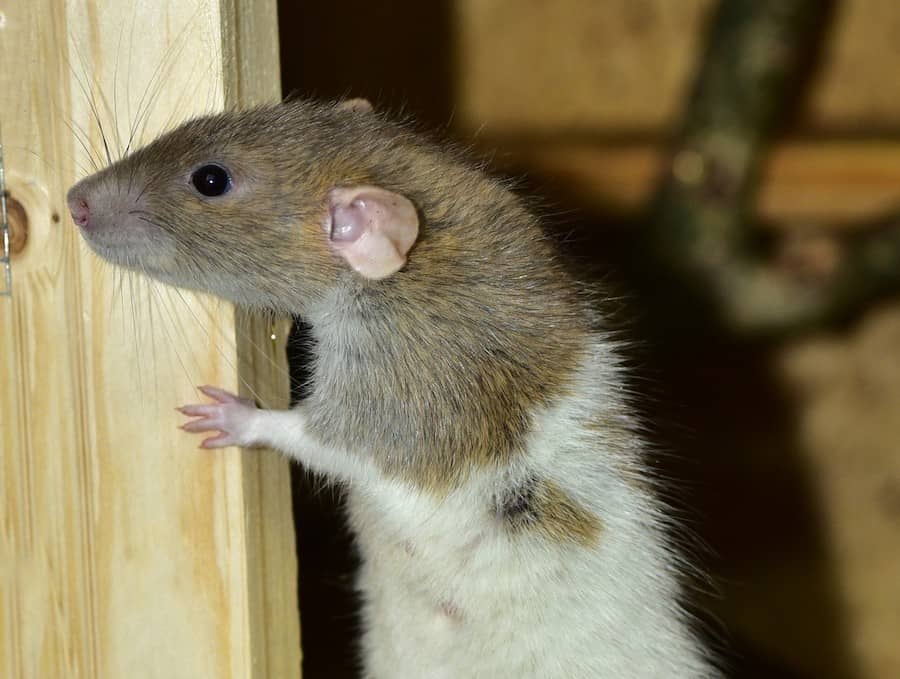The crisp fall air and temperatures can be a welcome respite from the heat and humidity of summer. Rodents, especially mice, however, have a different take on cooler temperatures. They view it as a threat to their survival and they act accordingly.
A rodent’s natural instincts tell it to search out a warm place, preferably with an easily accessible food source, to ride out the winter. That behavior puts commercial facilities from grain storage and processing facility to a school or industrial plant cafeteria square in the crosshairs.
Rodents Winter Nesting Habits in the Midwest:
In the Midwest, the most problematic rodent for commercial properties are mice.
Mice are prolific breeders – up to eight, four to eight pup litters per year – and they prefer nesting locations that are dark, secluded, and with an abundance of nesting materials, which can include paper products, cotton, packing materials, insulation, and fabrics.
Mice are cautious creatures by nature and won’t venture too far – 10 to 15 ft. – from their nesting site in search of food. If mice can feed off the spillage or food waste from a production line or racking system, they’ll establish a nest in a nearby pallet, false post, or wall void.
They also do not need much moisture to survive as they get 80 to 90 percent of their moisture requirements from the food they consume.
Where Do Rats Go In The Winter? – Do Mice Hibernate?
Mice do not appreciate the change of seasons they just know it’s cold, according to Jason Everitt, technical director for Rottler Pest Solutions.
Although rodents don’t hibernate, they are on the hunt for warmth!
“Mice cannot withstand cold temperatures,” says Everitt. “They lose body heat, and it triggers them to find a warmer place to live. The warm temperatures will be the attraction over food initially.”
Not all commercial facilities – food storage facilities vs. a commercial kitchen – are overly warm and that is why mice will target product and packaging to establish nesting sites.
Everitt says this reinforces the importance of conducting thorough inspections of incoming shipments for signs of rodent activity as soon as they hit the loading dock and before they are brought into the building.
“Most of the time it can be quite evident that mice have gained access or are trying to gain access to your facility,” says Everitt. “Droppings and gnaw marks on the packaging are telltale signs but rodents are stealthy and just because you don’t see them doesn’t mean they aren’t there.”
Rodent Proofing Your Home and Businesses:
As the winter approaches, you need to be prepared that rodents are going to be scavenging for a new home. Ultimately you don’t want these rodents making camp in your home or business, so you need to take the following precautions to rodent-proof your home:
Early Detection is Key:
Finding and blocking access points before mice get into a sack of grain in a dry goods storage area or in the corner of an employee locker is far less costly than eradicating them once they establish a nest.
How important is early detection? Everitt shared an example of wool blankets being shipped by a local charity from its warehouse that were infested with mice. “They had no idea until they went to ship them that the mice had established nests inside,” adds Everitt.
Food product spoilage is another reason why early detection of rodents is important. If even the slightest evidence of rodents – droppings, hairs, body parts, etc. – is found in a single can or jar of food the production line will be shut down and the entire run thrown out.
In Missouri’s numerous pet food production plants production has increased during the Covid-19 pandemic as pet adoption numbers have soared. As a result, many of these plants are running 24 hours a day to keep up with demand. This has also increased the amount of rodent-attracting food waste and the volume of incoming shipments of ingredients – grains, flour, seeds, – staples of a mouse’s diet.
“The last thing a pet food plant wants to do is shut down a production line for an inspection, cleaning and decontamination if there is a rodent issue,” says Everitt. “The lost time and money associated with a shutdown or product recall is significant as is the risk and liability associated with shipping tainted food that puts consumers at risk of contracting food-borne illnesses.”
Everitt adds that product recalls are up under the Food Safety Modernization Act (FSMA) and QA managers are aware of the repercussions that come with a tainted product or a poor or failed audit or inspection.
Real-Time Rodent Detection:
New remote monitoring technology offered under the Rottler Real-Time brand can provide a solution in the early detection of rodent behavior in commercial facilities.
“Remote monitor technology can tell us when rodents are engaging with a trap or bait station and by time stamping the activity provide more clues on the possible root causes of the problem,” says Everitt. “It offers clients 24/7 eyes and ears and that is important this time of year when rodents are making their move indoors.”
Team Up With The Professionals To Stop Rodents In Their Tracks:
Good sanitation practices are essential for effective long-term control. Eliminating sources for food can help to keep mouse populations from exploding. And since mice can enter any opening larger than 1/4-inch, exclusion measures, such as screening, caulking or otherwise closing off access points, also can help keep mice out.
LEARN HOW TO PROTECT YOUR FACILITY FROM RODENTS
If your business or commercial property is looking for a pest management partner that goes the extra mile to design and deliver comprehensive rodent and pest management programs, call Rottler Pest Solutions at 636-249-1601 for a free quote, consultation, or training for your staff.


